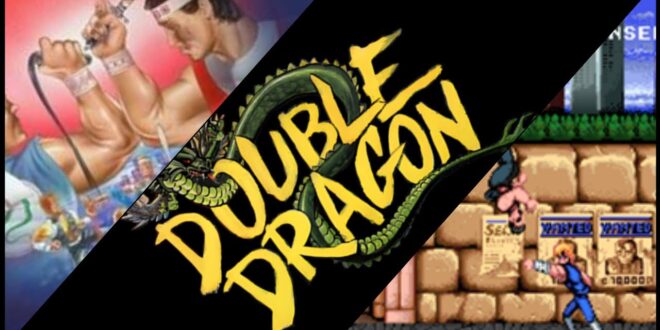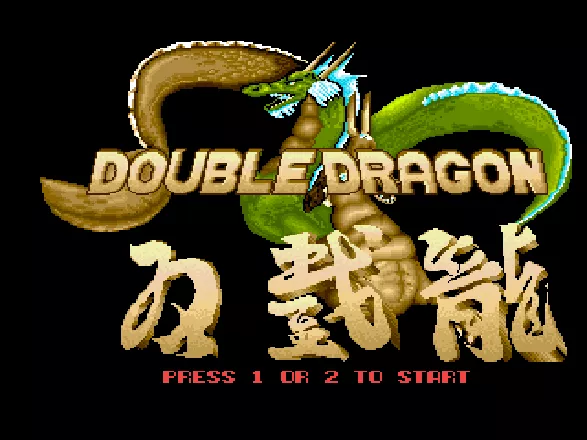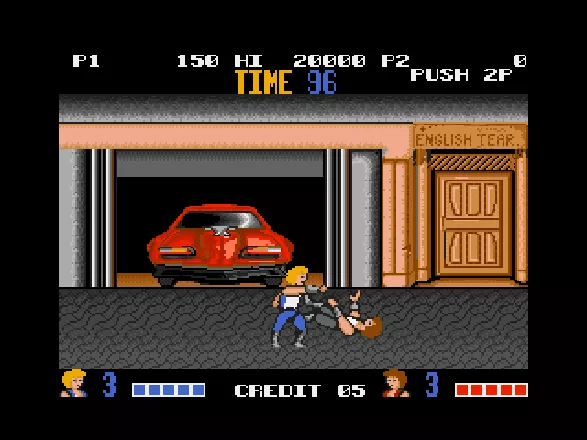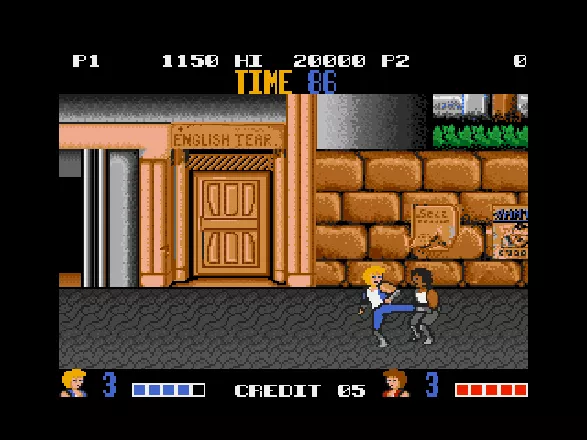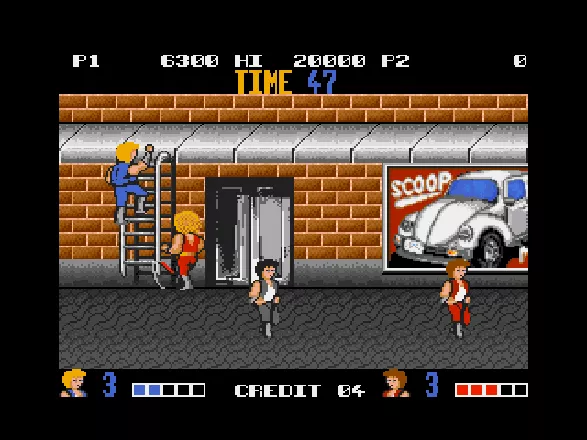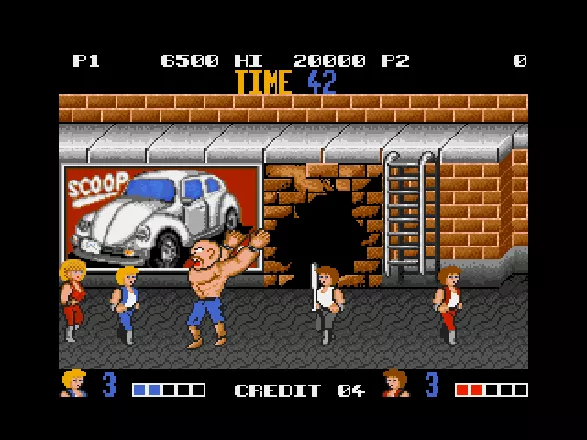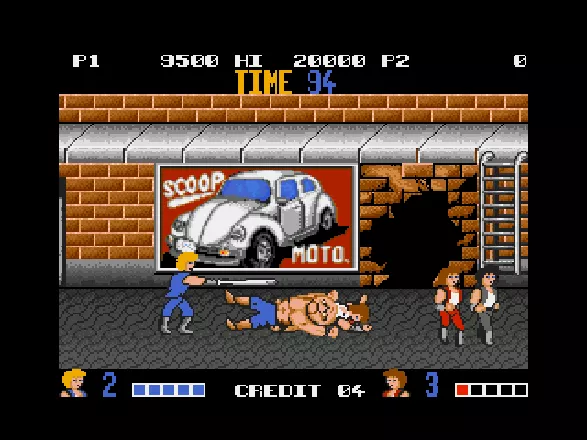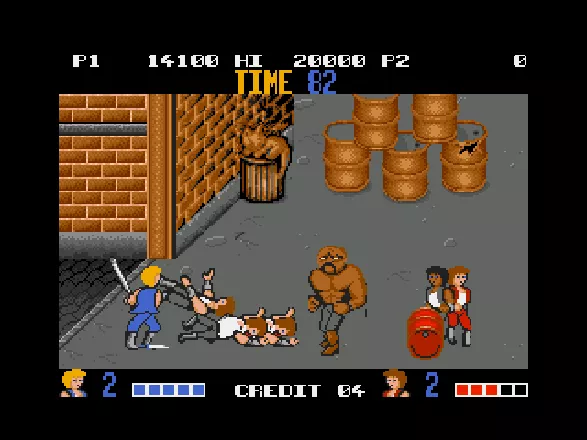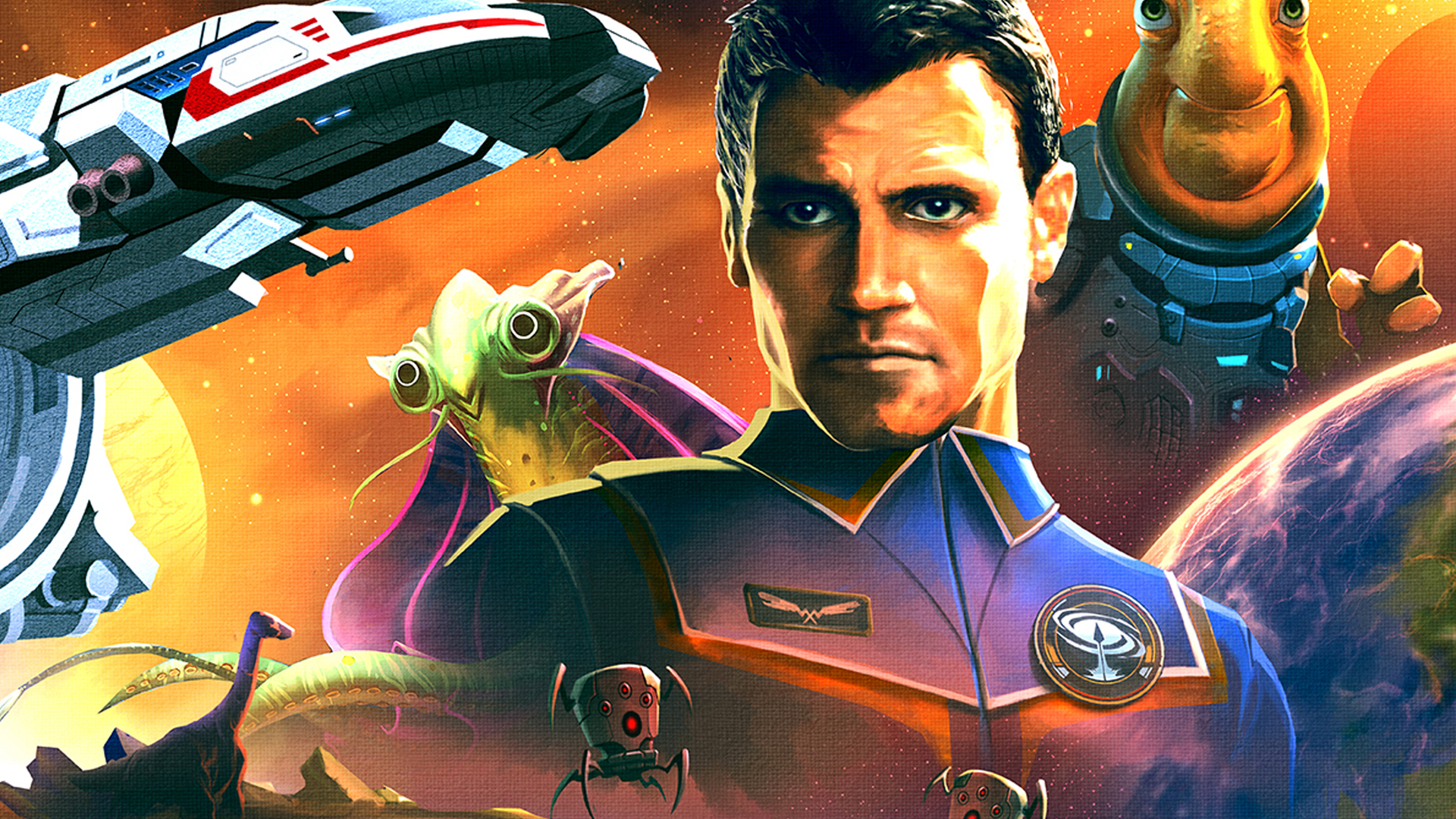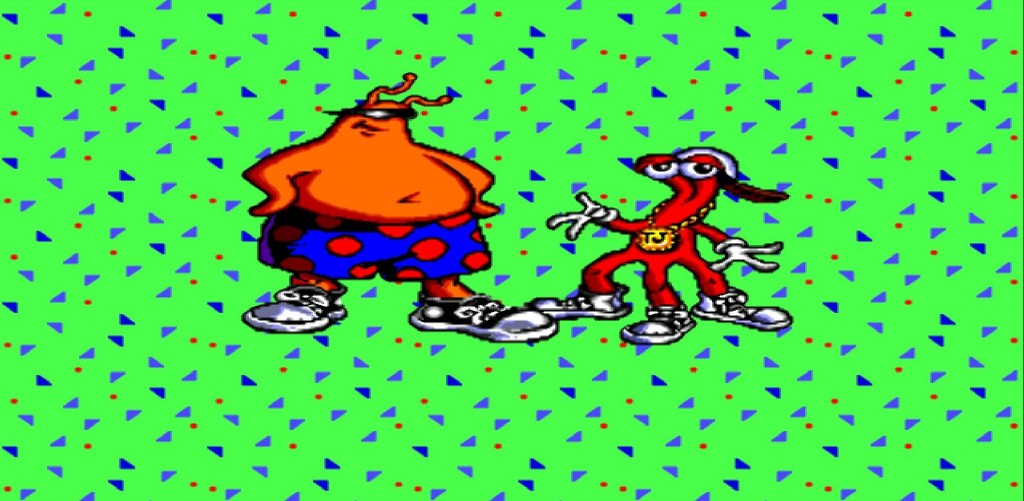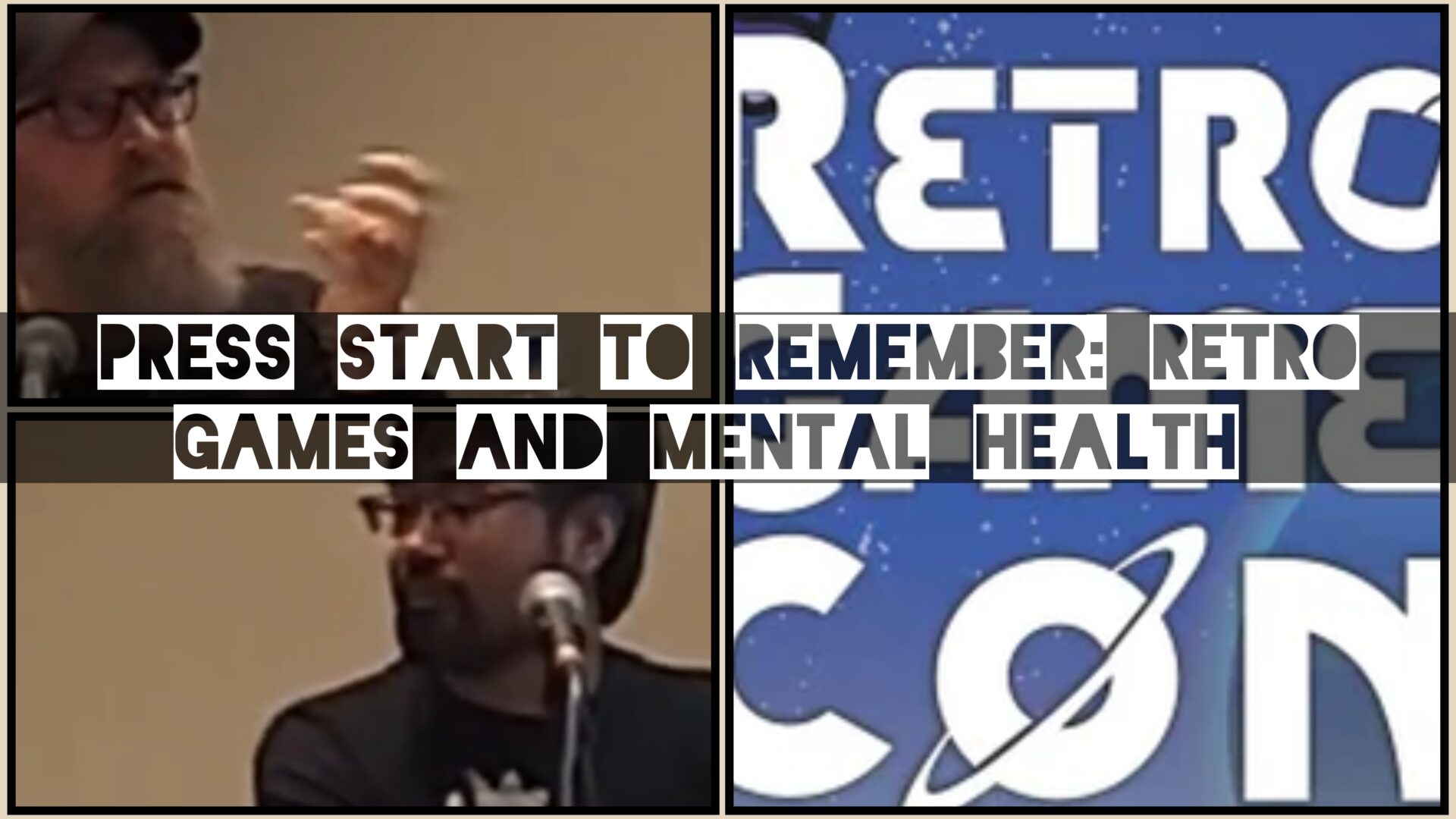Double Dragon: A Retro Arcade Review with a Father-Son Power Team
There are games you play once and forget, and there are games that etch themselves into your memory forever. For me, Double Dragon sits firmly in that second category. Released in 1987, it wasn’t just another arcade cabinet, it was the spark that lit a fire under the entire beat ’em up genre. I spent my childhood pumping quarters into this machine, sweating through its brutal battles, and celebrating every victory with friends who stood shoulder to shoulder in the arcade glow.
(HEY YOU!! We hope you enjoy! We try not to run ads. So basically, this is a very expensive hobby running this site. Please consider joining us for updates, forums, and more. Network w/ us to make some cash or friends while retro gaming, and you can win some free retro games for posting. Okay, carry on 👍)
Fast forward to today, and here I am revisiting those same back alleys and gang-filled streets—this time not with the kids from the block, but with my son, “DashingDerek,” playing on our PC. What started as a nostalgia trip quickly became something deeper: a chance to share one of my favorite slices of gaming history with the next generation.
A Trip Down Memory Lane… with Fists
From the moment we pressed start, the past came rushing back. The infamous opening scene played out: Marian, Billy’s girlfriend, is punched in the gut by the Black Warriors gang and dragged away. It was as shocking now as it was then, a reminder of how blunt early arcade storytelling could be. This single scene set the stage for everything that followed—a gritty rescue mission across rooftops, factories, and seedy streets, filled with enemies just begging for a fist to the jaw.
For Derek, it was his first time seeing this kind of raw setup, and I watched his eyes widen as he instantly understood the stakes. For me, it was a time machine back to when I was his age, staring at the same screen in a smoky arcade with quarters lined up on the bezel.
Graphics: Pixel Punching Perfection
On its release, Double Dragon’s graphics felt revolutionary. The gritty urban backgrounds—alleys filled with graffiti, factories littered with scaffolding, and neon signs glowing faintly in the background—created a believable world to brawl through. Today, the pixels may look blocky to a modern eye, but the art direction still shines.
Playing it on PC with upscaled visuals, Derek commented that the sprites “looked alive,” which is a testament to how much character the developers packed into those little figures. The enemy designs stand out even now: the towering Abobo, with his oversized muscles and feral face, remains one of the most memorable bosses of the entire 8-bit era. Every enemy carried some kind of personality in their walk, stance, or attack.
The animation wasn’t fluid by modern standards, but it didn’t need to be. A punch looked like a punch. A bat swing looked—and felt—like it could crack a skull. Watching Derek land his first successful throw, then laugh in disbelief as the enemy hit the ground, reminded me of my own first time pulling it off.
Sound: 8-Bit Beats to Beat Down To
No review of Double Dragon is complete without praising its soundtrack. Composed by Kazunaka Yamane, the music is iconic—infectious loops that carry you through each stage with adrenaline. The title theme remains one of the most instantly recognizable pieces of arcade music ever written.
Back in the 80s, those tunes blared from scratchy cabinet speakers. Now, piped through our PC’s sound system, they felt surprisingly crisp and powerful. Derek kept humming the stage one theme long after we shut the game off, proof that Yamane’s compositions still work across generations.
The sound effects were equally effective. The smack of a punch landing, the grunt of an enemy taking a hit, and the clang of a baseball bat connecting all added to the immersion. When Marian’s theme kicked in during the end sequence, it struck an emotional chord, even for Derek experiencing it for the first time.
Gameplay: Co-Op Combat Classics
This is where Double Dragon earned its place in history. For the first time in arcade brawlers, two players could join forces at the same time. Derek and I found ourselves instantly locked into that rhythm: one of us grabbing an enemy from behind while the other laid in punches, or both of us swinging pipes like baseball players at batting practice.
The combat is straightforward but satisfying. Punch, kick, jump, and grab—those are the building blocks. But combine them, and the game opens up: elbow smashes that can clear a crowd, headlocks that turn into throws, and improvised weapons that shift the balance of a fight. The controls on our gamepads felt sharp and responsive, even if they lacked the clicky resistance of the original arcade joysticks.
Of course, no session of Double Dragon co-op is complete without some accidental friendly fire. Derek laughed every time he accidentally knocked me flat, and I pretended to be annoyed even though I was laughing too. That mix of camaraderie and chaos is what made the game legendary.
And then there’s the ending twist. After beating the Black Warriors’ leader, the game pits the two players against each other for Marian’s affection. Derek’s face when he realized he’d have to fight me was priceless. Let’s just say, he didn’t go easy on me—and Marian chose wisely.
Replayability: Endlessly Entertaining
For a game that can be finished in under an hour, Double Dragon has incredible staying power. Derek and I immediately wanted to jump back in. Could we get through level two without losing a life? Could we beat Abobo faster? Could we stop punching each other by mistake? The loop of play, fail, laugh, retry never got old.
What struck me most was how Derek, who grew up on games with complex progression systems and sprawling maps, found the simplicity refreshing. He said, “It’s just straight to the point—fight your way through.” That’s the kind of timeless design that makes Double Dragon special.
Replayability also comes from experimenting with weapons and techniques. One run might focus on carefully controlling crowds, another on reckless aggression. Every session feels slightly different, which explains why players in the late 80s kept dropping quarters into the machine.
The Legacy Lives On
What makes this review different for me is that it’s not just about revisiting a favorite game—it’s about introducing it to my son. Sharing Double Dragon with Derek gave me a window into how gaming connects generations. The same game that defined my childhood gave us an afternoon of laughter and bonding decades later.
For those who want to dive deeper into how Double Dragon shaped gaming history, I highly recommend checking out the full History of Double Dragon article, which covers everything from its arcade origins to modern revivals like Double Dragon Neon.
Final Thoughts: A Timeless Tale of Two Dragons
Double Dragon is more than just a beat ’em up. It’s a piece of gaming history, a symbol of the 80s arcade boom, and for me personally, a bridge between two generations. The fact that Derek and I can enjoy it together today proves that some games never lose their magic.
Yes, it’s unforgiving. Yes, it’s old-school. But that’s part of the charm. Every punch, every laugh, every dramatic final fight for Marian’s affection adds to the legacy. And whether you played it back in 1987 or are discovering it today, Double Dragon still has the power to unite players in a shared adventure.
For anyone looking to relive the glory days or show a younger gamer where it all began, dust off Double Dragon—and maybe grab a partner. The streets are still waiting.
The verdict
Graphics - 79%
Sound - 90%
Gameplay - 84%
Replay value - 83%
84%
The ending was quite the shock!
 Retro Replay Retro Replay gaming reviews, news, emulation, geek stuff and more!
Retro Replay Retro Replay gaming reviews, news, emulation, geek stuff and more!
